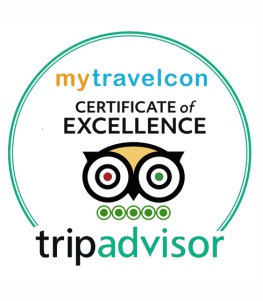
Overview
Jaipur, the capital city of Rajasthan, also known as the Pink City of India, is one of the most magnetic and charming cities in India. Opulent in heritage sites and royal references, the horizons of the city offer impressive tourism opportunities from end to end – be it monuments, excursion spots, wild safaris, old temples, grand events, verdant gardens, colorful handicrafts, exciting shopping prospects – you name it and Jaipur has it for you!
Introducing Jaipur
Jaipur – the princeliest city of India
Perhaps the most likable city in the entire India, Jaipur characterizes a fine balance between conspicuous cultural ethos and a remarkably urbane lifestyle. The city is an ideal tourism haven for those aficionados of heritage sites, local handicrafts and a sense of tranquility in the middle of luxuries, above all.
Founded by Maharaja Jai Singh II at the onset of 17th Century (1727 AD), the city of Jaipur was coined as “the Pink City” by Prince of Wales in 1896 after the widespread hues of buildings in the city, all painted pink in his warm welcome. The city continues to emanate the color of hospitality and amiability. The various monuments inside and around the city are made up of stone that appears predominantly pink in color.
Heritage Places / Sightseeing in Jaipur
The following top 13 Tourist Attractions include among the prominent structures not be missed in Jaipur:
- Ancient Amer fort by Maotha lakeside built in 1592 AD, the City Palace from where the rulers governed from the heart of the city.
- The valley of royal cenotaphs at Gaitore.
- The five-storey palace of the winds (Hawa Mahal) in the heart of city.
- The Victory Fort (Jaigarh Fort) that houses the world's largest cannon on wheel .
- The Nahargarh Fort perched on the Aravalli hills for a spectacular bird eye view of the pink city.
- Besides the monuments, Statue Circle in the city is a popular hang-out of locals, which also serves them as joggers’ park. The circle is a prominent landmark in the city to locate important temples including Birla Temple, Galtaji Temple, Moti Dungri Ganesh Temple and Govind Dev Ji Temple, and chief shopping sites viz. Jauhari Bazaar (market), Bapu Bazaar and Nehru Bazaar.
- Also not to be missed is Jantar Mantar in Jaipur, which is a magnificent astrological observatory from the 17th-century housing the world's largest sundial within. Built on the principles of art, science and religion, Jantar Mantar in Jaipur is the largest among similar structures across India in New Delhi, Varanasi, Mathura, and Ujjain.
- In addition, there are some small and not so small towns near Jaipur that offer tourists a fair peep into the ancient culture, art and architecture that prevailed in the region several centuries ago. For instance, stay at the Samode Palace (now turned a heritage hotel) in Samode town is an unforgettable experience.
- Sanganer town, which is barely 16 kilometers from Jaipur, is popular for its bold floral block prints from the 18th century and highly ornate Jain temples. Those fond of archeologically significant excavations would enjoy a trip to Bairath a great deal.
- Tonk is a small town popular for its ancient buildings, particularly the Golden Mansion (Sunehari Haveli) and the Arabic and Persian Research Institute.
Though chiefly popular for being home to several ancient and imposing palaces, mansions and forts, Jaipur is much more than just a splendid cluster of heritage sites and royal museums.
The city is situated at close quarters from three prominent national parks cum tiger reserves of India, namely Ranthambore National Park, Sariska National Park and Sambhar Wildlife Sanctuary. - About 170 kilometers towards Sawai Madhopur lies Ranthambore National Park, which is particularly popular among wildlife photographers for getting picturesque tiger photographs.
- Sariska National Park is barely 116 kilometers drive towards Alwar, mostly frequented by tourists for an idyllic time in the lap of nature, spotting plethora of birds, animals and amphibians including tigers, leopards, crocodiles, water snakes, wild boars, jackals, hyenas, woodpeckers and peafowls.
- Sambhar Wildlife Sanctuary is located 60 kilometers in the West of Jaipur close by the largest inland salt lake of India. The sanctuary is popular among tourists for spotting tigers, watching popular bird species by the salt lake and witnessing salt production at massive scale.
How to reach Jaipur
Jaipur is well connected to the rest of India by air, rail and road through a sophisticated network of domestic and international airport, dedicated railway junction and national highways such as NH8, NH11, and NH12. Moreover, in addition to all the normal trains that abidingly stop at Jaipur railway station, special luxurious trains like Palace on Wheels connect Jaipur from Delhi to all the major tourist destinations in Rajasthan including Jodhpur, Udaipur, Bikaner etc.
What is the best time to visit Jaipur?
The best time to visit Jaipur is between October and March. Not only the weather is particularly pleasant during these months, but also numerous fairs and festivals take place in and around Jaipur that promise to enhance the tourism experience. The fairs and festivals to watch out for include Kite Festival, Camel Festival, Elephant Festival, Gangaur, Teej and so on.

